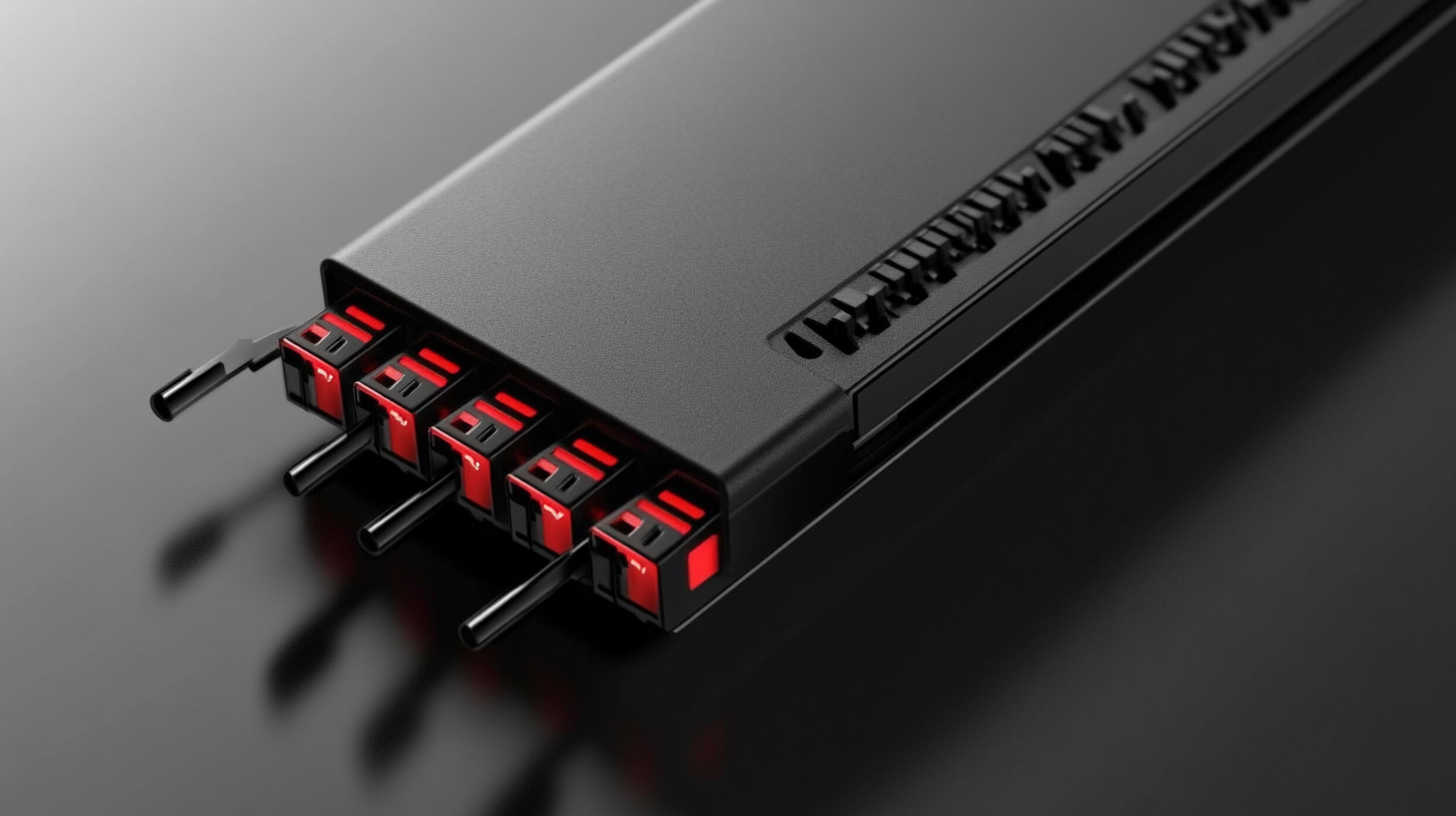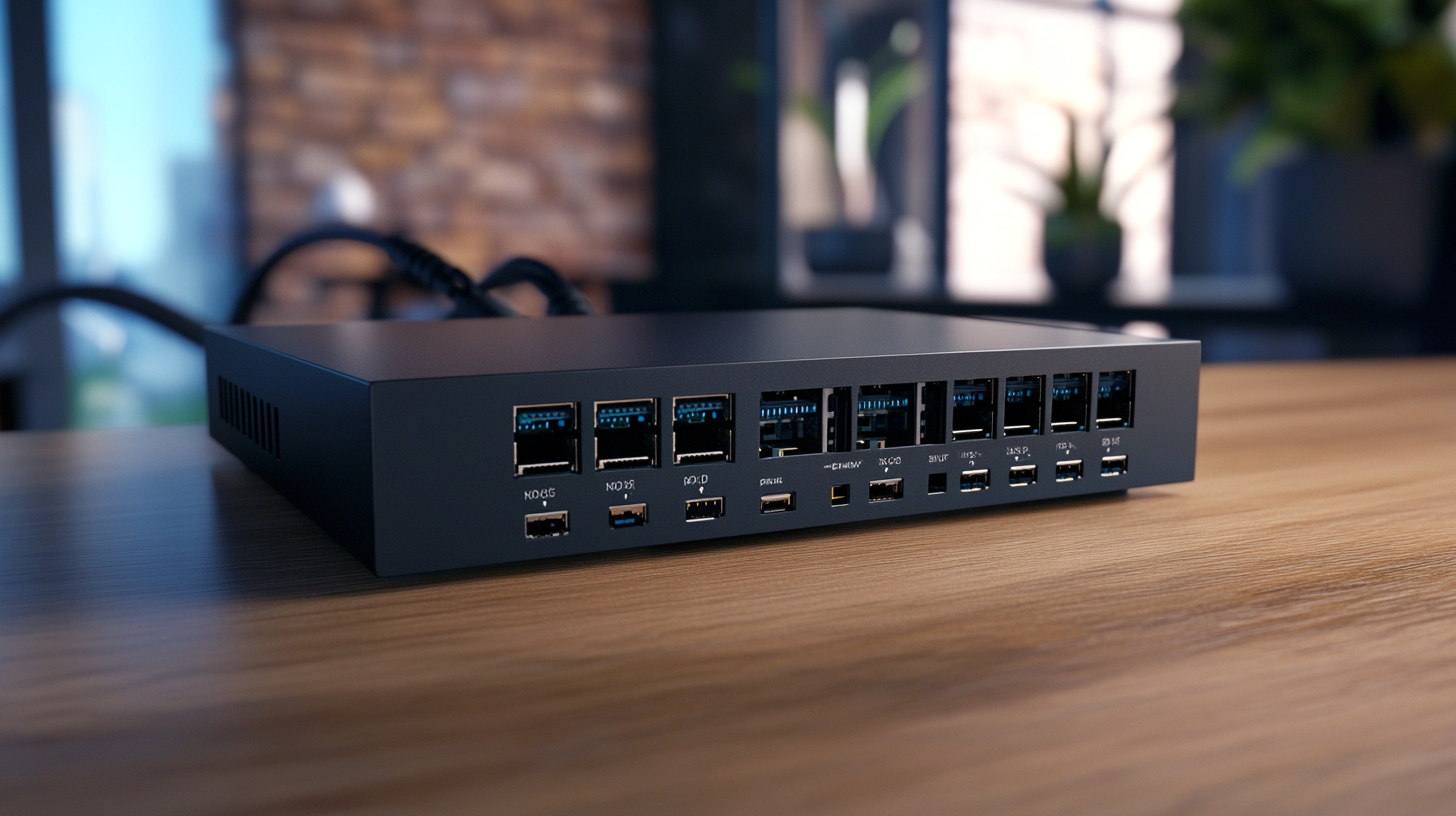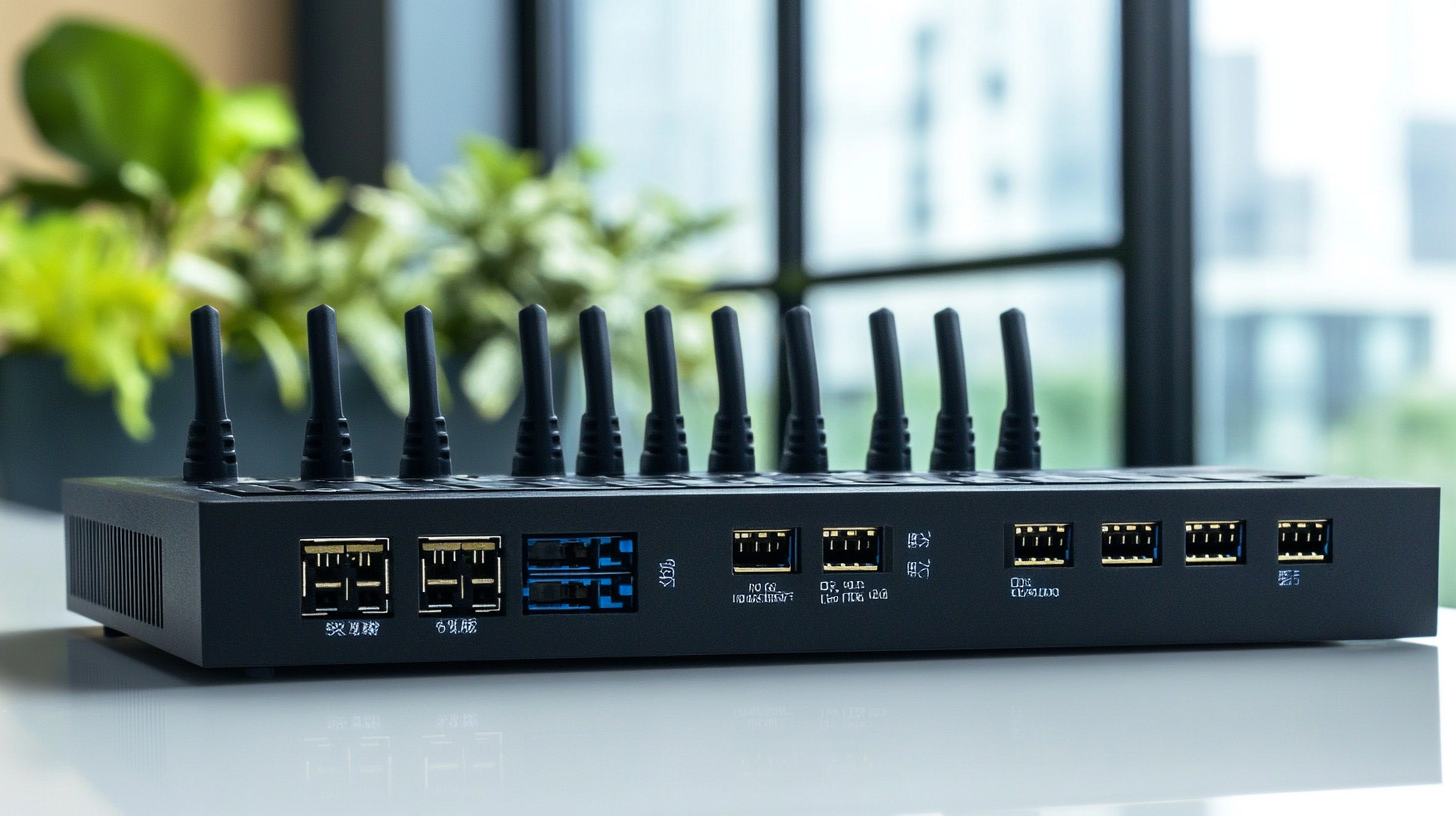
- hasivo@hasivo.com
- Mon - Sat at 7:00AM to 9:00PM
Leave Your Message

In recent years, the global market has witnessed significant fluctuations due to changing trade policies and tariffs, particularly between the United States and China. Despite the challenges posed by reciprocal tariffs, Chinese manufacturers continue to thrive, notably in the production of high-demand electronic components. Among these, Power over Ethernet (PoE) switches stand out as a critical product that is gaining traction among global buyers. These innovative devices not only streamline network connectivity but also provide power to connected devices, making them essential in modern infrastructure setups. As buyers navigate the complex landscape of tariffs and sourcing, understanding the unique advantages offered by PoE switches from Chinese manufacturers becomes paramount. This blog aims to explore the resilience of China's manufacturing sector in the face of trade challenges and how the burgeoning demand for PoE switches is shaping the future of global procurement strategies.

Navigating the complexities of tariffs can be a crucial challenge for global buyers, especially in light of recent waves of regulations affecting imports. The surge in tariffs imposed by governments significantly impacts supply chains, often leading to increased costs for businesses. Understanding the intricate web of global supply chains is essential, as they serve as the backbone of commerce, connecting producers and consumers across borders.
One effective strategy for adapting to tariffs is to diversify supply sources. By considering suppliers from different regions, companies can mitigate risks associated with tariffs on specific imports. Additionally, investing in technology and analytics can offer better forecasting and adaptability, allowing businesses to respond promptly to tariff changes. Maintaining open lines of communication with suppliers can also result in more flexible arrangements and quicker adjustments.
Finally, leveraging trade agreements can be beneficial. Familiarizing oneself with existing agreements that may offset tariffs can provide cost savings and competitive advantages. Staying updated on government policies and engaging with trade professionals will further aid in adjusting strategies to navigate the evolving landscape of global trade.

Chinese manufacturing has increasingly positioned itself as a competitive leader in the production of Power over Ethernet (PoE) switches. According to a recent report by MarketsandMarkets, the global PoE switch market is anticipated to grow from $1.98 billion in 2020 to $4.5 billion by 2026, providing substantial opportunities for manufacturers in China, which currently holds a dominant share of approximately 42% of the market. This strategic advantage arises from China's robust supply chain, cost-effective labor, and advanced manufacturing technologies, allowing for swift innovation and product delivery that global buyers find appealing.
Furthermore, the integration of advanced features in PoE switches, such as smart management and energy efficiency, is fostering competitive advantages for Chinese manufacturers. A study from Technavio highlights that the rise in demand for smart homes and Internet of Things (IoT) devices is key to PoE switch adoption, projecting a CAGR of over 14% in smart device applications. By leveraging these trends, Chinese companies are not only fulfilling global demand but also enhancing their product offerings, which are often priced lower than counterparts from other regions. This pricing strategy, paired with superior technology, solidifies China’s competitive edge in the global PoE switch market.

In today's global market, buyers are increasingly facing the challenge of tariffs that can significantly impact the cost of importing goods, including the best Poe switches from Chinese manufacturers. To navigate these complexities, global buyers must adopt proactive strategies to mitigate tariff expenses. One effective approach is to conduct thorough market research to understand tariff classifications and exemptions that may apply to specific products, allowing buyers to make informed decisions about sourcing.
Another strategy involves building strong relationships with suppliers. By collaborating closely with Chinese manufacturers, buyers can negotiate terms that might include shared responsibility for tariff costs or commitments to volumes that leverage lower rates. Additionally, exploring alternative sourcing locations or diversifying supply chains can reduce dependency on high-tariff markets, ultimately leading to cost savings and greater operational flexibility. By implementing these strategies, global buyers can better navigate the shifting landscape of tariffs and optimize their purchasing processes.
This chart illustrates the average tariff rates imposed on best Poe switches from Chinese manufacturers over the past five years. It reflects the increasing financial burden on global buyers as tariffs surged in 2021, but showed a slight decline in subsequent years. Understanding these trends is crucial for buyers looking to mitigate costs.
As global buyers navigate the complexities of tariffs, the demand for Power over Ethernet (PoE) switches continues to rise, particularly from Chinese manufacturers. Despite looming tariff pressures, these switches remain popular due to their versatility in powering devices like IP cameras, VoIP phones, and wireless access points. Analyzing the current trends reveals that savvy buyers are leveraging different strategies to mitigate costs and ensure a steady supply of these essential networking components.
**Tips for Buyers:** When sourcing PoE switches, consider diversifying your supplier base. Engaging with multiple manufacturers can help you negotiate better terms and reduce dependency on any single source, especially as tariffs fluctuate. Additionally, staying informed about tariff changes and trade policies is crucial. This proactive approach will enable you to anticipate price changes and adjust your purchasing strategy accordingly, ensuring that you remain competitive in your market.
Another effective strategy is to explore bulk purchasing options. Buying in larger quantities can lead to significant savings, counteracting some of the added costs from tariffs. Moreover, take the time to analyze the features of different PoE switches, as investing in high-quality, efficient models can save long-term operational costs and reduce the need for frequent replacements.
| Brand | Model | Ports | Power Output | Price (USD) | Tariff Rate (%) |
|---|---|---|---|---|---|
| TP-Link | TL-SG1005P | 5 | 15.4W per port | 79.99 | 25 |
| Netgear | GS305P | 5 | 15.4W per port | 89.99 | 25 |
| D-Link | DGS-1005P | 5 | 15.4W per port | 70.00 | 25 |
| Zyxel | GS1900-5HP | 5 | 30W total | 99.99 | 25 |
| Cisco | SG350-10P | 10 | 30W per port | 199.99 | 25 |
In recent years, global buyers have faced a myriad of challenges due to tariffs imposed on Chinese goods. Despite these obstacles, the resilience of Chinese manufacturing continues to shine through, especially in sectors such as technology. The rapid production capabilities and innovation from Chinese manufacturers have made it possible for global buyers to access high-quality products like the latest POE switches, often at competitive prices. This adaptability not only helps them withstand tariff pressures but also positions them for future growth in an ever-evolving market landscape.
**Tip:** Stay informed about the latest tariff regulations and trade agreements that may affect your purchasing decisions. Understanding these changes will help you better navigate costs and identify potential supply chain disruptions.
As tariff implications linger, it is crucial for buyers to explore alternative sourcing strategies while maintaining relationships with trusted Chinese suppliers. Building partnerships with manufacturers who offer transparency and flexibility in pricing can significantly mitigate the effects of tariffs, allowing buyers to remain competitive in their markets.
**Tip:** Consider negotiating long-term contracts with key suppliers to lock in favorable pricing, which can provide stability amidst tariff fluctuations. Additionally, diversifying your supplier base can enhance your resilience against market volatility.